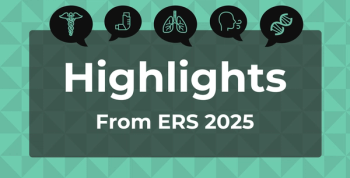
COPD Surgical Procedure Reduced Hospitalizations in Phase 2 Trial
A phase 2 clinical trial of a surgical procedure called targeted lung denervation to open blocked airways in patients with chronic obstructive pulmonary disease (COPD) showed that it reduced problems associated with the disease.
A phase 2 clinical trial of a surgical procedure called targeted lung denervation (TLD) to open blocked airways in patients with chronic obstructive pulmonary disease (COPD) showed that it reduced problems associated with the disease.
TLD reduced COPD problems by more than 50% in patients with stable disease who received the active treatment compared with patients who received the sham treatment, according to Dirk-Jan Slebos, MD, from the University Medical Centre Groningen (the Netherlands), who will discuss the findings from the AIRFLOW 2 trial at the European Respiratory Society International Congress. The AIRFLOW 2 trial is taking place in several centers in 6 European countries.
TLD involves passing a special catheter through a bronchoscope into the lungs. The bronchoscope allows doctors to see the inside of a patient's airways and to use the catheter to deliver radiofrequency energy to the nerves on the outside of the airways, interrupting their normal function. This causes the airways to relax and widen, decreases mucus production, and decreases airway wall inflammation. The catheter and bronchoscope are then removed.
TLD targets the cholinergic pathway, which regulates the body's inflammatory responses to injury and promotes smooth muscle constriction of the airways. Anticholinergic drugs, which are often used to treat COPD, also target this pathway, but when they are combined with TLD there appears to be an additional beneficial effect, even in patients who are being heavily treated with other drugs. Patients in both parts of the trial received tiotropium, an anticholinergic bronchodilator.
"We have been able to significantly reduce chronic respiratory symptoms such as shortness of breath, exacerbations of the disease, infections and hospitalizations in a group of COPD patients who are already on aggressive medical therapy. There was also a trend towards improved quality of life and better lung function in the treated patients," Slebos
Slebos presented results from 82 patients in the trial. Half of them were male; their average age was nearly 64 years. Three to 6 months after the treatment, 71% of patients who had received the sham treatment had an adverse respiratory event related to COPD, compared with 32% of patients who received TLD. He said the benefits continued for 1 year, with those in the treatment arm having half as many hospitalizations as those receiving the sham treatment.
None of the patients died and there were no TLD-related adverse effects that needed to be treated. Five patients (12%) who received the TLD treatment experienced stomach problems such as nausea, abdominal bloating, and digestion discomfort. Those symptoms went away after 6 months.
"These occurred because of the radiofrequency energy affecting the nerves lining the nearby gullet," said Slebos. "We are improving our process and imaging in order to better understand where these gastric nerves are, and we have implemented additional measures to improve our ability to avoid them in future procedures."
A larger phase 3 trial, AIRFLOW 3, is being planned for next year.
Over 300 million people worldwide suffer from COPD, including 4% to 10% of adults in European countries. TLD has been under investigation since 2008, with 4 clinical trials in the last 6 years (IPS-I, IPS-II, AIRFLOW-1 and AIRFLOW-2).
Reference
Slebos DJ, Shah P, Herth F, et al. A double-blind, randomized, sham-controlled study of Targeted Lung Denervation in patients with moderate to severe COPD. Presented at: European Respiratory Society International Congress; Paris, France; September 15-19, 2018; Abstract OA4929.
Newsletter
Stay ahead of policy, cost, and value—subscribe to AJMC for expert insights at the intersection of clinical care and health economics.













































